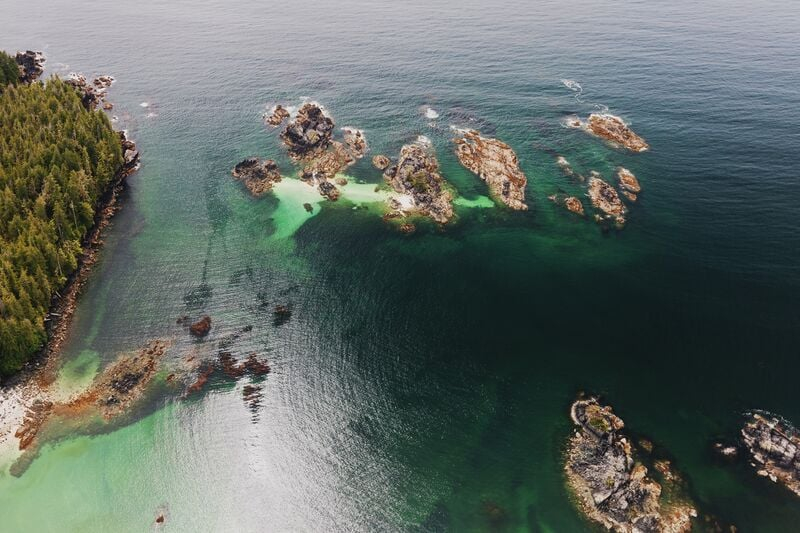Support strong Canadian climate journalism for 2025
A group of Indigenous communities in Alaska are calling for a stop to a “reckless” mining plan across the Canadian border that they say will threaten their water, food supply and way of life.
The Southeast Alaska Indigenous Transboundary Commission (SEITC) — a commission of 15 Tlingit, Haida, and Tsimshian Nations — has turned to an international human rights body to support their case.
On Aug. 1, the Southeast Alaska Tribes requested support from the Inter-American Commission on Human Rights, arguing the reopening of the Eskay Creek Mine in B.C. will violate their human rights.
The open-pit gold-silver mine near Stewart, B.C. is proposed to be reopened by Skeena Resources, who report that the project has the potential to produce 3.7 million tonnes per year of silver-bearing ore and gold over an estimated 12-year operating life.
The mine revitalization process, which began in 2021 — 13 years after Eskay Creek’s initial closure — will have devastating impacts on the Unuk watershed downstream, said Esther Reese, President of the SEITC.
“This work is so critically important to us,” Reese, who is Eagle Tsaagweidí (Killerwhale) from Ḵéex̱ʼ Kwáan (Kake), Alaska, told Canada’s National Observer. “It has really reached the status of an emergency.”
The watershed drains nearly 4,000 square kilometres, and supports habitat for all five species of Pacific Salmon.
The Unuk watershed, located near the communities of Ketchikan, Saxman and Metlakatla in Alaska, is also necessary to sustain the Tongass National Forest, which is home to ancient forest and various wildlife.
The Eskay Creek mine poses significant risk to this body of water and the wildlife that inhabits it, according to Reese.
A 2022 study in the journal ScienceAdvances concluded that liquid waste from mines contaminates water, alters sediment chemistry, changes cycling patterns and creates poor conditions for wildlife. This is especially harmful for species such as the endangered Chinook (king salmon), to which the Unuk is home, according to SEITC.
In recent decades, SEITC member tribes have seen firsthand the decline of wildlife such as salmon and eulachon downstream from mines, said the consortium’s press release. Reese says she has witnessed the effects of a decimated salmon population due to declining water quality across the colonial border in B.C., too.
She recalled the heartache of meeting a young Indigenous girl at a B.C. conference who, because mines had devastated the salmon population on her land, thought that salmon only existed in myths.
“I have two children, and they are still able to … smoke salmon. They're able to still fish. They're able to still practice what our ancestors practiced,” said Reese. “But it's too late for those B.C. children, and soon it will most likely be too late for our children.”
In B.C., the mine revitalization process is going through with permission from the Tahltan Nation, on whose lands the mine will be developed.
“Reconciliation is not achieved with just one step. It requires ongoing innovation, collaboration and leaning into discomfort,” said Chad Norman Day, President of the Tahltan Central Government in a media release announcing the partnership in 2022. “The Tahltan Central Government has been clear on behalf of all Tahltan people that there will be no world-class mining jurisdiction in Tahltan Territory without robust Tahltan stewardship which must include world-class wildlife and fisheries management, strong environmental mitigation measures and recognition of our 1910 Declaration.” (The 1910 Declaration asserted rights and title over Tahltan traditional territory.)
However, Mae Manupipatpong, senior associate attorney at Earthjustice — the environmental group that has brought the case on behalf of the SEITC –– said that the rights of the SEITC’s member tribes should be considered alongside those of the Tahltan Nation.
“The environmental harms don't just stop at arbitrary borders, and cultural rights don't really either,” she said.
“The border between Canada and Alaska is a colonial border,” added Reese. “In the time of our ancestors, there was no border. They were able to care for the lands and the waterways, and there was no exception to that.”
The Unuk River’s transboundary span means that the consultation processes between the Alaska Tribes and the B.C. government and those between the provincial government and the Tahltan Nation have looked different.
Whereas the Tahltan Nation has been consulted throughout the Eskay Creek mine revitalization process, the member Tribes of the SEITC have been promised chances to provide input, but have not had the opportunity for “deep consultation,” said Manupipatpong.
The Supreme Court of Canada ruled in 2021 that Indigenous people who are successors of past occupants have constitutional rights in Canada, even if they are non-residents. Following the decision, the SEITC applied for participating Indigenous nation status in B.C., which would have afforded them the same rights as First Nations in B.C. to free, prior and informed consent to projects — such as the Eskay Creek revitalization — which could affect their lands and ways of life. Their request was denied, which Manupipatpong said has led to a separate, inadequate consultation process.
“The Canadian government putting a separate consultation method for us is really a human rights violation, because … there is significant danger to our ways of life,” Reese said.
A Ministry of Environment representative declined to comment given the active litigation over the matter.
The revitalization of the Eskay Creek mine is just one example of many proposed B.C. mining projects in the headwaters of the Unuk, Stikine and Taku rivers, which could impact the member tribes of the SEITC. In 2020, the SEITC filed an international human rights complaint against the Government of Canada for the human rights violations B.C. mines pose to the tribes. The complaint is currently in its briefing phase.
B.C. is set to publish an environmental impact assessment for the Eskay Creek mine in the near future, which will open a 30-day period for public comment during which the SEITC can give feedback before the mine revitalization process moves forward. According to Manupipatpong, this is not enough time for member tribes of the SEITC to give their free, prior and informed consent to the project.
This request for precautionary measures to the Inter-American Commission for Human Rights means the SEITC would be afforded the time they need to evaluate the environmental and cultural impacts of the mining project to their waters, Manupipatpong explained.
For Reese, the stakes for SEITC’s consultation in the Eskay Creek revitalization process are the highest they could be.
“If we can't get a seat at the table,” said Reese, “We are looking at the decimation of our way of life.”






Comments
The illustration / map misplaces the Rocky Mountains by hundreds of miles.
Didn't I just read that BC First Nations want Alaskan fishers to stop taking so much of the salmon that would normally make its way back home to BC rivers? Sounds like an example of a good quid pro quo in the making.
BTW, when are (Canadian, especially) mining companies going to start giving a flying %$#@ about the Earth and the future and the kids ... of all species? They're an embarrassment and are causing untold damage.
I suspect we cannot expect transparency or consistency of minds, hearts, or exploitative capitalism (hmm, strike that last item) from the competitive heirs to colonialism in N.America.
As they started, extracting fish, furs, and timber; so they continue, extracting minerals and fossil fuels in a desperate race to the toxic muck at the bottom of the barrels.
Get Rich Quick, Leave Sh*t Behind, should be engraved on the national emblems of both Canada and the USA.